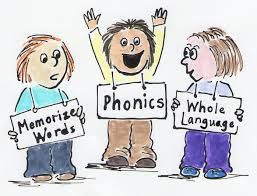Reading wars, structured literacy programs, early screening, multi-sensory interventions delivered with fidelity, IEP, IEE, assistive technology. When I began to get my arms around what I define as the “dyslexia space” I had no idea how complex the underlying issues were, and all of the controversies! Good heavens.
Many years ago, when we were told that our daughter had a reading difference and/or dyslexia, we had one goal in mind. Teach my kid to read. That is what I call this site, and that has always been our goal. All we have ever wanted is for our daughter to read. What we didn’t know then is how complicated that would be. Sadly, our story is not unique. There are millions of kids like our daughter, and some are not so lucky as to have our life-wrenching choices that at least offer some solutions.
I have written in other blogs about the immense improvement our daughter demonstrated after she received services with fidelity at Camp Dunnabeck. As a friend often says, we peeled away a layer of the onion. Our daughter was happy, she was learning, and she was reading! Did we solve our challenges or come to the end of our story? Hardly. The journey never ends, even into adulthood where workplace challenges for dyslexic adults are starting to garner some attention. And, just because our daughter can decode or pronounce a word does not mean that she can understand what she is reading.
What Is Reading?
Being able to read is really, really complicated, and it’s not something that happens naturally. As reading specialists and other professionals know, reading comprises several different skills that are all very important for someone to be considered “a reader.” The National Reading Panel essentially defines the components of reading instruction as follows:
Phonemic awareness
Phonics
Fluency
Vocabulary
Comprehension
The structured reading programs that are scientifically proven to help people who are dyslexic, and everyone for that matter, include these components. You may be surprised to learn that K-12 teachers responsible for teaching young children to read may not understand or have training in this area. The reason is mainly that many colleges and universities do not include dyslexia training or structured reading programs as part of the teaching curricula (you can Google the reading wars to get more in-depth information on this long-standing- battle). Matter of fact, there are very few college programs accredited to offer multi-sensory language education. I have no idea how many unaccredited programs integrate dyslexia awareness and a phonics-based reading program into the curricula.

So, What Do We Do About All This?
I say this in every post. I am not an expert. I’m a Mom navigating a complicated landscape, and an educational publisher trained tried and true to identify gaps and find learning solutions. I believe in higher education, and I am encouraged by some of the best practices that are simmering. It’s not enough, though, and the fact is that higher education is still more part of the problem than the solution.
So, here’s how I see it:
1. Higher education-Higher education teacher education and training programs do not prepare enough teachers to address dyslexia and reading differences adequately.
2. K-12-Many K-12 teachers responsible for teaching reading are not equipped to understand and teach kids with reading differences.
3. Policy-Each state has its own set of unique laws related to dyslexia. Some states have no laws on the books. There is wild inconsistency in how states, school districts, and schools deliver services.
What Can We Do?
“Sometimes the questions are complicated and the answers are simple.” Dr. Seuss
It’s the holiday season so I’ll end with a partial wish list of solutions for 2018:
• Curricula reform in colleges and universities-including a focus on assistive technology.
• More teacher training partnerships between colleges and universities.
• Affordable options to train teachers or potential tutors.
• Fundraisers to send more kids to specialized camps for services and summer activities.
• More specialized schools for kids who need a curricular solution to thrive.
• Increase and pass more state laws that ensure that kids with learning differences are identified early, and have access to a proper education.
I hope that Teach My Kid to Read can be part of these solutions, and welcome your feedback on this article. Happy Holidays, and here’s to 2018!
Bibliography
Gray, P. (2013). The Reading Wars: Why Natural Learning Fails in Classrooms. Retrieved on December 15, 2017 from https://www.psychologytoday.com/blog/freedom-learn/201311/the-reading-wars-why-natural-learning-fails-in-classrooms.
The National Reading Panel https://www.nichd.nih.gov/research/supported/Pages/nrp.aspx

Hi Marion,
Looks good! Nice photo! I hope you get a good reaction.
Best, Jerry
On Fri, Dec 15, 2017 at 12:30 PM, Teach My Kid to Read wrote:
> marion posted: ” Reading wars, structured literacy programs, early > screening, multi-sensory interventions delivered with fidelity, IEP, IEE, > assistive technology. When I began to get my arms around what I define as > the “dyslexia space” I had no idea how complex the unde” >
Pingback: Why Learning About “Why” Helps Us All to Read - Teach My Kid to Read